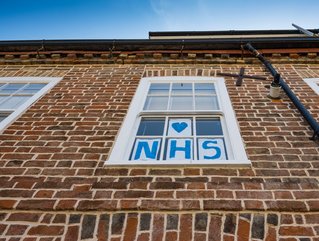Digitalisation and supply chains: the NHS post-COVID-19

The UK’s National Health Service (NHS) has been under pressure for a long time. Now, as the world recovers from the COVID-19 pandemic, a backlog of six million patients, a lack of resources and increasing staff vacancies are intensifying these long standing strains. As a result, the Nuffield Trust predicted that the NHS’s pandemic recovery will take much longer than health services in other countries.
“It’s clear that the NHS entered the pandemic with very few advantages in terms of capacity and resources compared to other high-income countries,” says Sarah Reed, Senior Policy Fellow of the Nuffield Trust.
Since its establishment in 1948, the NHS has provided tax-funded healthcare to residents in the UK. Calls for a ‘unified medical service’ began with the Poor Law of 1909, but it wasn’t until after World War Two that the UK government recognised the need to improve public health provisions on a national scale. The NHS was founded on the principle of providing a universal, free health service based on individuals’ clinical need - not their capability to pay health bills.
In the words of Aneurin Bevan, the UK’s Minister for Health from 1945-51 who founded the NHS: “No society can legitimately call itself civilised if a sick person is denied medical aid because of a lack of means.”
The digitalisation of healthcare post-COVID-19
The pandemic did have some positive outcomes for the NHS: it required the digitalisation of the public health sector, as healthcare could only be provided online or over the phone in some instances. Many people struggled to access the NHS during the UK lockdowns, but the timely shift to digital services means the country is now better prepared to provide more accessible healthcare. The UK government has now released plans to have at least 75% of adults using the NHS App rather than their GPs for medical advice by 2024.
However, there are concerns that the digital shift will alienate those who don’t know how to use online services, such as the elderly. This means the NHS must continue to adjust their healthcare provisions according to the needs of different patients. Working with local councils and community healthcare services is one way to solve this issue efficiently.
For example, the NHS is currently in partnership with Community Health and Eyecare Ltd (CHEC) to clear the backlog of half a million patients awaiting eye surgery. This is predominantly patients needing treatment for cataracts and age-related macular degeneration (AMD), meaning the vast majority are elderly people who may struggle to access online healthcare services.
One successful intervention of the NHS-CHEC partnership is the provision of a ‘Home to Hospital’ service, free of charge, to all patients who need transport for an eye appointment they would otherwise be unable to attend (whether that’s due to a disability or language barrier).
By working together and meeting patients’ diverse needs, the NHS and CHEC are able to provide a personalised community health service that cuts out the inefficiencies and uncertainties of the typical NHS waiting list.
“Ultimately, fundamental changes are required to aid the recovery of the NHS and protect its future. We must look to the role of technology, as well as partnerships and community-based care to minimise the impact of unknown future events on the NHS, and safeguard the future of our nation’s healthcare, all while addressing the inequalities in our healthcare today” says Imran Rahman, CEO and Consultant Ophthalmologist at CHEC.
The NHS leads the way for the eradication of modern slavery and sustainable supply chains
Another positive of the pandemic was that it drew attention to the way the NHS sources goods for use in healthcare. The immense country-wide demand for PPE and lateral flow test kits went hand in hand with arising concerns that NHS procurement may be “tainted by modern slavery”. The government addressed this issue with The Health and Care Act 2022, promising to tighten regulations about how and where NHS bodies and their suppliers are sourcing goods from.
The Secretary of State for Health and Social Care, Steve Barclay, promised this would be a “turning point in the UK’s mission to eradicate slavery and human trafficking in supply chains around the globe. As the biggest public procurer in the country, the NHS is well placed to spearhead this work.”
Although there are still many hurdles to overcome (especially with regards to NHS staff pay), decisive and sustainable efforts are clearly being made to protect the future of the NHS by utilising its strengths: technology and community-based care. As it set out to do in 1948, the NHS continues to provide free, universal healthcare for individuals and communities that need it, regardless of their income.






